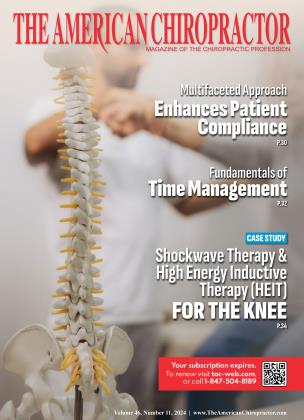By Steve Ediss
Most practitioners set a bar for an acceptable level of success when it comes to patient care outcomes and symptom relief. Whether you practice straight chiropractic manipulation or your services offer a more comprehensive alternative healthcare approach, one factor should always be considered — parasitic infection.
A parasitic infection can alter a patient’s motor skills, mood, and gut function, elicit fibromyalgia and arthralgia, cause headaches, create chronic fatigue, alter manual muscle test results, and even alter test results when using electronic devices (EAV) to perform a nutritional assessment. Research has documented that parasites can commandeer the nervous system of the host they invade.
Kathleen McAuliffe cites many examples of this phenomena while observing multiple species of parasites in her book This is Your Brain on Parasites. She illustrates how the parasite can make the host do whatever it wants to create the most favorable living situation for the invading parasite.
Examples of this type of “hijacking” have been cited in multiple publications. One of my first exposures to this concept came from an old Discover Magazine article by Carl Zimmer in July 2000 titled “Do Parasites Rule the World.”One of the examples Zimmer illustrates is the life cycle of a lancet fluke. As the lancet fluke moves from host to host during its life cycle, it makes each host behave in a way that allows the fluke to move from one host to the next in its endeavor to complete its life cycle.
Another example is the sacculina. This parasite invades a crab when it is most vulnerable — the crab’s molting period. Once inside the new host, the parasite taps into the crab’s bloodstream and consumes its nutrients. As the female parasite matures, it castrates the crab and lays its eggs in the crab’s reproductive area. The parasite then makes the crab give birth to the parasite’s eggs as if the eggs belonged to the crab.
As you can see, this is certainly an eye-catcher for anyone, but it’s more important for healthcare practitioners. According to the United States Geological Survey’s website, “The best recent estimates suggest that there are approximately six million species [of parasites in the world].” The ones we may encounter more frequently can come from our domestic pets, foods (including various meat sources and produce), the people who prepare our food, water, dust, rodent feces, mosquitos, and ticks, just to name a few.
The key is to be aware that parasites can exist in any patient, and clinical presentations can vary from patient to patient and parasite species to parasite species. Laboratory testing may not always reveal a positive result (false negative) based on the collected specimen being tested.
Making a solid diagnosis can be difficult at times. I had a patient who presented with chronic diarrhea following a trip to Mexico. I muscle response tested (MRT) his parasite reflex point, and it was positive. After discussing the interpretation of this simple test with him, he didn’t believe me. He was reluctant to accept the correlation of a reflex point to the MRT.
Roughly two to three weeks later, he returned for another office visit, weighing 26 pounds lighter. The same positive MRT was present, but he still did not want to believe me. On his own, he went to a parasitologist for an evaluation. Eight stool smears later, the patient was presented with a photograph from a micron microscope of his parasite. He was treated and recovered, and he never questioned me again.
If you suspect you or your patients may have a parasite issue, an MRT over the parasite reflex point (although not diagnostic) may help point you in the direction of managing a possible infestation. The parasite reflex point is located approximately two fingers width medial to the anterior superior iliac spine (ASIS) on the left.
I would never discourage the consultation of a parasitologist, but most patients respond well to conservative care with nutritional supplementation. Garlic, oregano, and black walnut have been used over the years for gut relief in parasite-related intestinal irritation. Proper stomach pH and proteolytic enzymes have also been found to be beneficial in the digestion of intestinal parasites.
Parasites love heavy metals. When making nutritional recommendations for patients with suspected parasites, a heavy metal detoxification program may also be beneficial. Heavy metal homeopathic remedies, in combination with essential fatty acids (EFAs), have been found to be very effective. Omega-3 EFAs or black currant seed oil act as binders, playing an essential role in a heavy metal detoxification program.
In conclusion, when traveling to a foreign country, keep in mind that microbiomes can be specific to that country. Fortifying the microbiome and immune system with probiotics before traveling can be helpful. It also can be useful to supplement with hydrochloric acid, which will create an intestinal environment that is not receptive to parasitic infection. Remember that traveling isn’t necessary to become vulnerable to a parasitic infection, and that MRT can aid in the information gathering process.
Stephan P. Ediss, D.C., P.A.K., F.I.A.C.A. has been in practice for 32 years. Dr. Ediss is a certified Professional Applied Kinesiologist (P.A.K.) in Applied Kinesiology with over 300 hours of certified training and is a Fellow of the International Academy of Clinical Acupuncture (F.I.A.C.A.). Over the years he has been a student of a wide variety of techniques. He has taken all of what he has learned and put it together in an organized, easy to follow, step-by-step protocol resulting in amazing clinical outcomes.
 View Full Issue
View Full Issue









